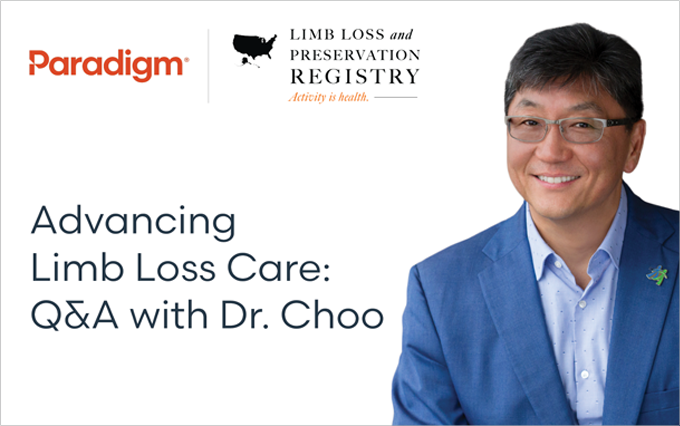04/10/2024

Paradigm: Can you tell us what it means to you to be a founding member that helped guide Mayo Clinic’s implementation of the Limb Loss and Preservation Registry (LLPR)?
Dr. Michael Choo: I was selected and invited to participate as a founding member of LLPR’s External Advisory Board when National Institutes of Health (NIH) awarded a 5-year contract to Mayo Clinic and the Thought Leadership & Innovation Foundation (TLI) in 2018. I was honored to participate in this national project that would help standardize, measure, and report clinical outcomes data in support of evidence-based clinical decision-making and best practices around limb preservation and limb loss care.
The well-known challenge with limb loss or limb amputation care management is the lack of any single data source or longitudinal data repository that can help better understand the incidence, prevalence, cost, and impact of various medical/surgical interventions on patients’ or injured workers’ functional status and quality of life.
As Paradigm’s Chief Medical Officer, I had the advantage of having our 30+ years of catastrophic injury data related to complex amputations and limb loss management, but I struggled to find any comparable national clinical benchmarking data for performance improvement analysis and Continuous Quality Improvement initiatives. The LLPR was the solution for this information gap, and I was very excited to help shape the LLPR potential with Paradigm’s experience and knowledge around amputation management and outcomes that can aid in improving injured people’s overall functional status and limiting their disability due to limb loss.
Paradigm: How does their mission align with Paradigm’s? What is the importance of this relationship?
Dr. Choo: LLPR’s mission and objectives aligned perfectly with Paradigm’s goal of achieving the best outcomes for our injured workers with complex limb loss. Paradigm has always extolled the importance of collecting and using our clinical data for improving our clinical care management decisions to achieve better outcomes. The LLPR shared the same goal of collecting clinical care-related data from all of the stakeholders involved and engaged in limb loss and preservation—i.e., acute care hospitals; rehabilitation facilities; physicians; therapists; clinicians, including prosthetists and orthotists; and manufacturers of medical devices—to better understand the trajectory of patient recovery and outcomes.
My involvement allowed LLPR and Paradigm to collaborate and align on important data elements and outcomes to be collected and monitored going forward. In addition, my involvement with LLPR allowed me to connect and develop a strong relationship with Amputation Coalition of America, which is the largest organization serving and advocating for those affected by limb loss with educational materials and support programs.
Last, but not least, is my collaboration with our workers’ compensation carriers for their support of this National Limb Loss & Preservation Registry. Through our partnership, we are in the process of helping workers’ compensation carriers get access to benchmarks and evidence-based data to better understand the value of various medical and surgical interventions to help injured workers return to their highest levels of function and productivity. This endeavor involves financial sponsorship considerations from our carriers’ Chief Medical Officers and senior claims executives who are stewards of the workers’ compensation industry.
Paradigm: What innovation do you see on the horizon that will have positive impacts on prosthetics and orthotics?
Dr. Choo: With the amazing pace of medical innovations and technology advances taking place in our modern period, we are beginning to have access to incredible surgical innovations, such as vascularized composite allograft transplantation (VCA) and osseointegration that can not only amplify, but fully restore, extremity function. In addition, technology evolution is making available amazing microprocessor-supported or enhanced prosthetics, orthotics, and robotics that can help injured workers with limb loss gain amazing levels of functional capacity.
The future is limitless for people with limb loss and limb injuries, and I am looking forward to keeping track of all these and more to support the patient-centered outcomes and quality of care.